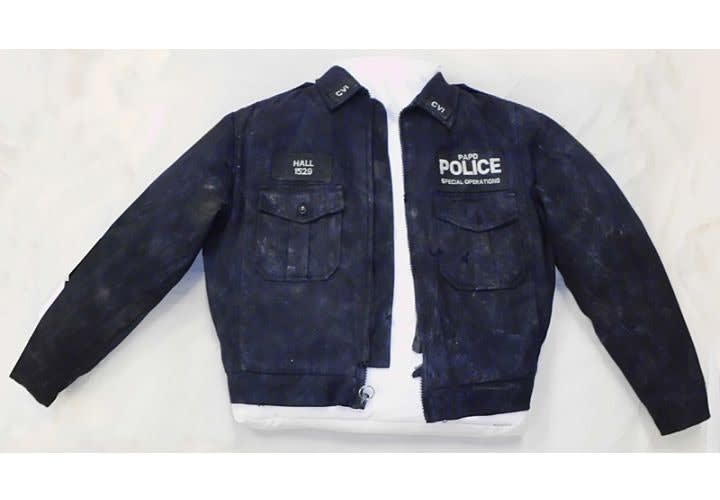Museum staff has been privileged to host behind-the-scenes tours of the artifact collections, and our 9/11 collection is one that has been shown often in the last several months. Visitor response to these objects is unfailingly far removed from the academic objectivity one might expect from the discussion of a collection of museum artifacts. The tangible evidence of the events of that day, including a stained jacket and a safety helmet worn by Port Authority police officers, fragments of the shattered marble facade of the Towers, or the damaged equipment used by first responders as they sought to save lives, stand as a vivid testament to the chaos and violence that marked that event, according to the NLEOMF.
Almost without exception, these artifacts have evoked heartfelt stories of what the viewer was doing on that day, of the people that he or she knew that died during the attacks, or of the emotions and thoughts they experienced as they watched events unfold. Their eyes fasten onto the artifacts on our tables, but it is easy to see that, in their mind's eye, they contemplate a very different scene.
Some visitors have been too young to remember the events of September 11, and their reactions are quite different from those of their elders. We find that the artifacts can serve as a bridge of experience between the generations, as elder family members share their memories and thoughts with the younger members of their family. The artifacts serve as a touchstone to strengthen connections between generations. A communal history, and often a family or personal history as well, is constructed and reinforced for the next generation.
The artifacts will be a part of the Museum's History Time Capsule exhibit and will highlight a watershed event in contemporary American history. This exhibit will hopefully serve as a springboard for visitors to begin meaningful conversations about how this event has changed law enforcement, and by extension, the nation and the communities we all live in.
As curatorial staff continues to research the individual artifacts over the next two years, we will be able to link the individual stories of those law enforcement officers who used these objects to the exhibits and programs available to the public when the museum opens in 2013.












